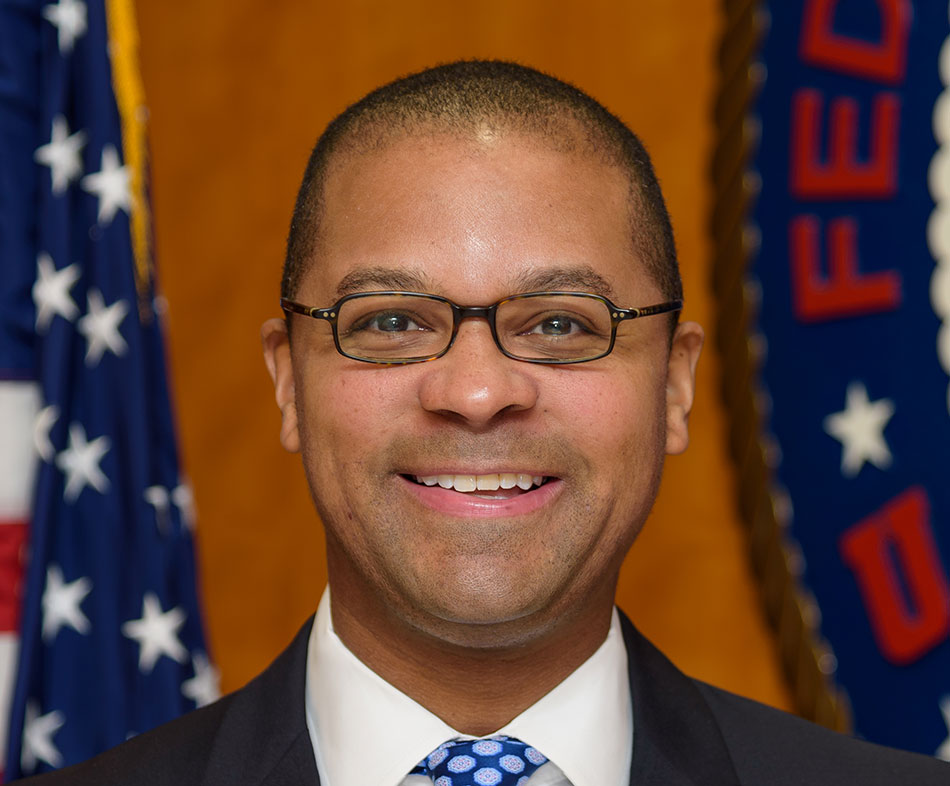The Time for Digital Equity Is Now
FCC’s Geoffrey Starks says COVID-19 has laid broadband disparities bare

The following is an excerpt from a Jan. 26 speech made by FCC commissioner Geoffrey Starks at the State of the Net 2021 Conference.
Early in the pandemic, many of us quickly recognized how critical home broadband access would be to our coronavirus response. Months of staying home has meant taking our daily activities — work, school, medical care and connecting with loved ones —
online. But not for everyone. Even before the pandemic and the economic devastation it has caused, tens of millions of Americans did not have an adequate home broadband connection. Our longstanding digital divide has morphed into a monstrous COVID-19 divide.
ALSO READ: The Capitol Siege: Images That Linger
But let us speak plainly. In 2021, Black Americans and other people of color are still, by a wide margin, significantly less likely to have a home broadband connection than their counterparts. This cannot stand. We can no longer defer the hard work on digital equity and believe that a future group and time will solve this issue. This is the time, and now is the moment. When we focus on broadband in America, we must focus on the smoldering front that communities of color constitute in our battle against internet inequality.
A Chance to Connect
As we look to our shared future — an unprecedented crisis and an unparalleled opportunity — leaving households disconnected will hurt our ability to rebuild the economy and our workforce; diminish our ability to keep Americans and our healthcare system safe by advancing telemedicine; and dim the educational horizon of young learners everywhere who fall further and further behind. With widespread vaccination on the horizon, we are all beginning to see the light at the end of the tunnel. We also know, as the president and his medical advisers have emphasized this week, that we have many difficult, challenging months ahead. That is why my top priority for the coming weeks is getting emergency broadband access to as many Americans as possible.
Our longstanding digital divide has morphed into a monstrous COVID-19 divide.
— Geoffrey Starks
Late last year, Congress passed omnibus appropriations and emergency coronavirus relief legislation, which provides $7 billion for broadband internet access. That funding will cover, among several important priorities, a new $3.2 billion Emergency Broadband Benefit for low-income families. The goal is to connect low-income households, especially households with school-aged children, to broadband networks at affordable rates. Broadband providers will be reimbursed up to $50 each month per low-income household they serve. If the household is on tribal land, the reimbursement is up to $75. The providers can also be reimbursed up to $100 for furnishing the household with a connected device like a computer or tablet if the household also contributes towards the device.
Congress also created several eligibility criteria to ensure the program reaches those most in need during this coronavirus crisis. The Emergency Broadband Benefit supports people who are eligible for the FCC’s existing Lifeline program (generally households at or below 135% of the Federal Poverty Guidelines) or the free or reduced-price school lunch or breakfast programs; people who have received a Federal Pell Grant; and those who have experienced a COVID-related loss of income.
The smarter way to stay on top of the multichannel video marketplace. Sign up below.
A Plan to Reach Out
I have great expectations for this program. If we’re successful, the Emergency Broadband Benefit will reach more disconnected low-income people and households of color than any previous FCC effort to close the digital divide. But Congress has — quite reasonably under the circumstances — given us just 60 days to set up the program.
There are lots of details to work out, and I am focusing most immediately on two issues:
First, how will we get the word out? As many of you know, and I have long been exasperated about the poor job the FCC has done in recent years to get the word out about the Lifeline program. Only about 20% of Lifeline-eligible households actually subscribe. For the Emergency Broadband Benefit to succeed, we’re going to need to do much better. That means a broad, collaborative outreach effort that must coordinate across the federal government and also include state and local governments, broadband providers, nonprofits, philanthropy, educators and direct service providers. I’ve heard from many organizations that are planning to get involved and I’m eager to support and amplify their efforts.
ALSO READ: FCC’s Geoffrey Starks: Digital Disparities Must Not Stand
The second issue is encouraging broadband providers to participate voluntarily. Last year, I was heartened by the large number of providers that participated in the Keep America Connected pledge, so we know many providers want to help their communities get through this difficult time. In the coming weeks, I will be working to make sure the rules for the Emergency Broadband Benefit are as clear and simple as possible and that providers get their questions answered quickly.
I have also started outreach to providers and their associations — something all of us can do. If you care about getting emergency relief to every eligible American, reach out to your broadband provider and the companies that serve your constituents, and let them know that their participation is important.
